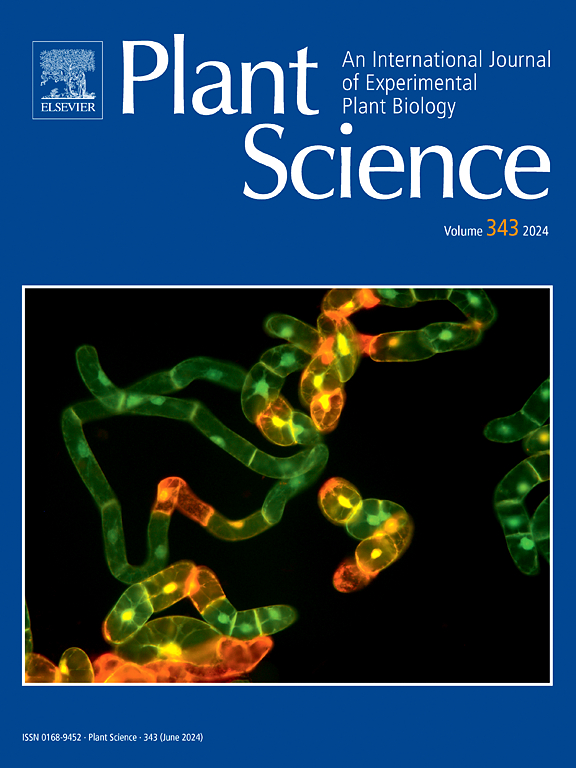Exogenous abscisic acid application enhances nitrogen use efficiency and root development in rapeseed: Transcriptomic and morphological evidence
IF 4.2
2区 生物学
Q2 BIOCHEMISTRY & MOLECULAR BIOLOGY
引用次数: 0
Abstract
Nitrogen (N) is an essential macronutrient governing plant growth and development. However, its excessive application in agricultural systems has precipitated environmental degradation while simultaneously reducing nitrogen use efficiency in crops. This study examined the effects of abscisic acid (ABA; 50 μM) under both high nitrogen (7.5 mM NO3−) and low nitrogen (0.25 mM NO3−) conditions on the roots system of rapeseed (Brassica napus) using a hydroponic system. Exogenous ABA application significantly enhanced root morphological parameters (root fresh weight by 16 %, total root length by 7 %, root surface area by 5 %, root dry weight by 16 %, and root volume by 24 %), substantially increased nitrogen concentration (30 %), and upregulated the activities of key nitrogen assimilation enzymes including nitrate reductase (18 %), nitrite reductase (17.8 %), glutamine synthetase (49 %), and glutamate synthase (10 %). Additionally, ABA application enhanced the activities of antioxidant enzymes including peroxidase (30 %), catalase (11 %), ascorbate peroxidase (29 %), and superoxide dismutase (25 %), while simultaneously increasing endogenous phytohormone concentrations of abscisic acid (30.4 %), indole-3-acetic acid (64.9 %), salicylic acid (72.9 %), and jasmonic acid (90.3 %) under low nitrogen (LN) stress conditions. Additionally, transcriptomic analysis explored the differentially expressed genes (DEG) significantly associated with antioxidant enzymes, nitrogen metabolism, transcription factors from the bZIP, AP2/ERF, and MYB families, as well as endogenous hormones including ABA signaling components (PYL/PYR/RCAR, PP2C, SnRK2). Overall, our findings establish a mechanistic foundation for enhancing nitrogen use efficiency (NUE) in Brassica napus through targeted molecular approaches such as CRISPR-Cas9 gene editing or transgenic overexpression, thereby contributing to the advancement of sustainable agricultural practices.
外源脱落酸提高油菜氮素利用效率和根系发育:转录组学和形态学证据。
氮(N)是控制植物生长发育的必需常量营养素。然而,在农业系统中过量施用氮肥,加剧了环境退化,同时降低了作物氮素利用效率。本研究考察了脱落酸(ABA;在高氮(7.5mM NO3-)和低氮(0.25mM NO3-)条件下,对甘蓝型油菜(Brassica napus)根系的影响。外源ABA处理显著提高了根形态参数(根鲜重增加16%,根总长增加7%,根表面积增加5%,根干重增加16%,根体积增加24%),显著提高了氮浓度(30%),并上调了硝酸盐还原酶(18%)、亚硝酸盐还原酶(17.8%)、谷氨酰胺合成酶(49%)和谷氨酸合成酶(10%)等关键氮同化酶的活性。此外,在低氮(LN)胁迫下,添加ABA可提高抗氧化酶(30%)、过氧化氢酶(11%)、抗坏血酸过氧化物酶(29%)和超氧化物歧化酶(25%)的活性,同时提高内源植物激素脱落酸(30.4%)、吲哚-3-乙酸(64.9%)、水杨酸(72.9%)和茉莉酸(90.3%)的浓度。此外,转录组学分析还发现了与抗氧化酶、氮代谢、bZIP、AP2/ERF和MYB家族转录因子以及ABA信号成分(PYL/PYR/RCAR、PP2C、SnRK2)等内源激素显著相关的差异表达基因(DEG)。总的来说,我们的研究结果为通过CRISPR-Cas9基因编辑或转基因过表达等靶向分子方法提高甘蓝型油菜氮素利用效率(NUE)奠定了机制基础,从而有助于推进可持续农业实践。
本文章由计算机程序翻译,如有差异,请以英文原文为准。
求助全文
约1分钟内获得全文
求助全文
来源期刊

Plant Science
生物-生化与分子生物学
CiteScore
9.10
自引率
1.90%
发文量
322
审稿时长
33 days
期刊介绍:
Plant Science will publish in the minimum of time, research manuscripts as well as commissioned reviews and commentaries recommended by its referees in all areas of experimental plant biology with emphasis in the broad areas of genomics, proteomics, biochemistry (including enzymology), physiology, cell biology, development, genetics, functional plant breeding, systems biology and the interaction of plants with the environment.
Manuscripts for full consideration should be written concisely and essentially as a final report. The main criterion for publication is that the manuscript must contain original and significant insights that lead to a better understanding of fundamental plant biology. Papers centering on plant cell culture should be of interest to a wide audience and methods employed result in a substantial improvement over existing established techniques and approaches. Methods papers are welcome only when the technique(s) described is novel or provides a major advancement of established protocols.
 求助内容:
求助内容: 应助结果提醒方式:
应助结果提醒方式:


